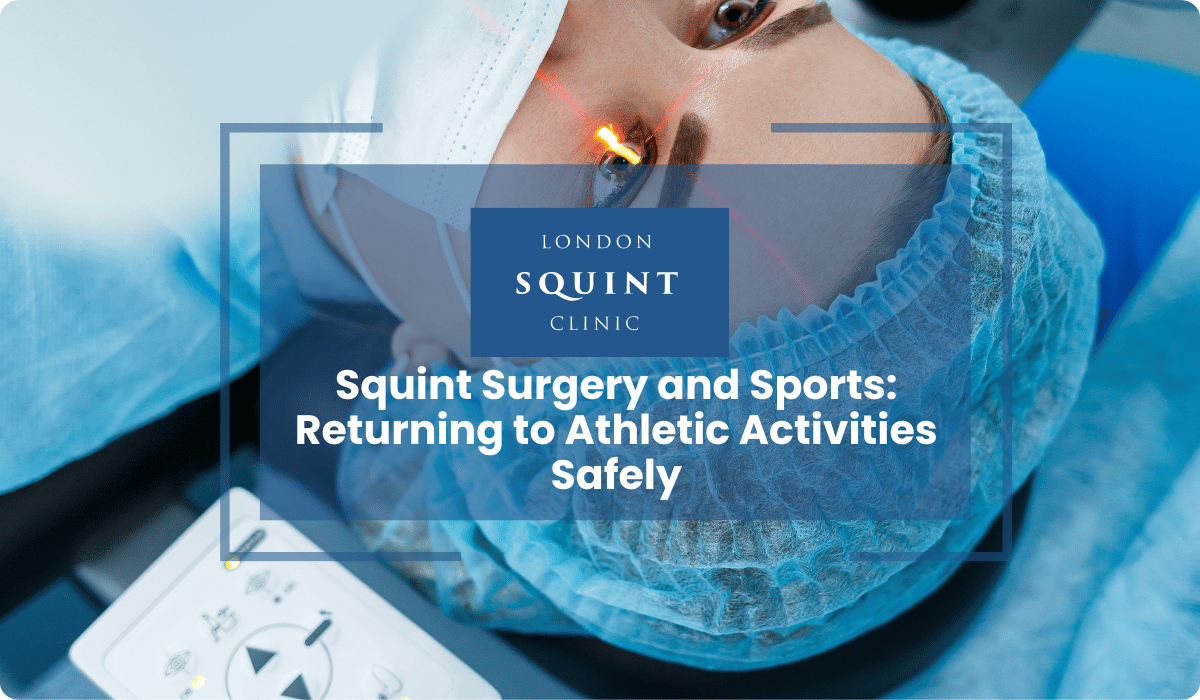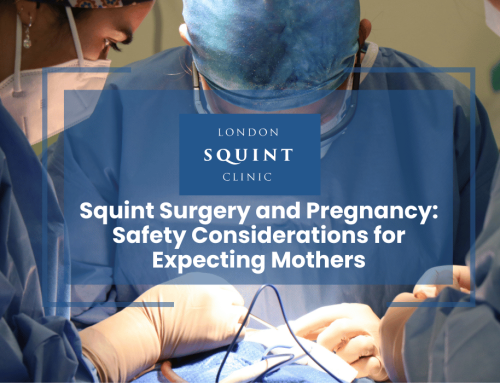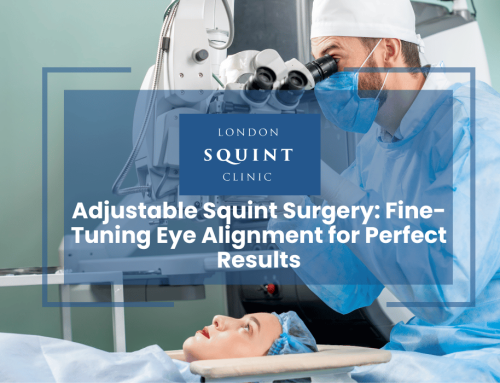Squint Surgery and Sports: Returning to Athletic Activities Safely
Essential Guidelines for Athletes After Squint Surgery
Recovery Timeline: Full visual stability typically takes 4-8 weeks, with follow-up appointments at one week, one month, and three months serving as important milestones.
Sport-Specific Return: Low-impact activities can resume at 2-3 weeks, moderate activities at 3-6 weeks, high-impact sports at 6-8 weeks, and contact sports at 8-12 weeks post-surgery.
Protective Eyewear: Sport-appropriate protective eyewear with polycarbonate lenses is essential when returning to activities, especially for contact and high-impact sports.
Gradual Progression: Implement a structured return protocol starting with short, low-intensity sessions and gradually increasing duration and intensity while monitoring for symptoms.
Performance Benefits: Many athletes experience improved depth perception, expanded visual field, and reduced visual fatigue following successful squint correction, potentially enhancing athletic performance.
Table of Contents
- Understanding Recovery Timelines After Squint Surgery
- When Can You Safely Resume Different Types of Sports?
- Contact Sports After Squint Surgery: Special Considerations
- Protective Eyewear Requirements for Athletes Post-Surgery
- Gradual Return Protocol: Building Back to Full Activity
- How Does Squint Surgery Impact Athletic Performance?
- Professional Athletes’ Experiences with Squint Correction
- Working with Your Surgeon to Create a Sports Return Plan
Understanding Recovery Timelines After Squint Surgery
Recovery from squint surgery follows a predictable timeline, though individual healing rates may vary. Most patients experience immediate post-operative effects including redness, mild discomfort, and watery eyes for 1-2 weeks after the procedure. The initial healing phase typically lasts 2-4 weeks, during which the eye muscles adapt to their new positioning.
Vision stabilisation is a critical factor in determining when athletic activities can safely resume. While basic visual function returns within days, complete visual stability—including depth perception and eye coordination—may take 4-8 weeks to fully develop. This timeline is particularly important for athletes who rely on precise visual tracking and spatial awareness.
Your surgeon will schedule follow-up appointments at specific intervals (typically at one week, one month, and three months) to monitor healing progress. These checkpoints serve as important milestones in your return-to-sports journey. It’s essential to attend all follow-up appointments, as your surgeon will assess whether your eyes have healed sufficiently to withstand the physical demands of your preferred sporting activities.
When Can You Safely Resume Different Types of Sports?
The timeline for returning to sports after squint surgery varies significantly based on the type of activity. Low-impact activities like walking can typically resume within 1-2 weeks post-surgery, while more demanding sports require a longer recovery period. Here’s a general guideline for different categories of sports:
Low-impact activities (2-3 weeks): Walking, gentle cycling, and light stretching can usually be reintroduced after the initial healing phase, provided there’s no excessive strain or risk of eye contact.
Moderate activities (3-6 weeks): Swimming (with protective goggles), jogging, and non-contact sports like tennis or golf may be permitted after your one-month follow-up, assuming normal healing progression. Swimming deserves special mention—chlorinated water should be avoided for at least 3 weeks to prevent infection or irritation of the surgical site.
High-impact activities (6-8 weeks): Sports involving jumping, running, or rapid directional changes like football, basketball, or aerobics classes should be postponed until at least 6 weeks post-surgery when the eye muscles have had sufficient time to strengthen in their new position.
Extreme or contact sports (8-12 weeks): Activities with high risk of eye trauma such as boxing, martial arts, rugby, or extreme sports typically require the longest waiting period, often 2-3 months, with explicit clearance from your ophthalmologist.
Remember that these timelines represent general guidelines. Your specific return-to-sport timeline should be individualised based on your surgical procedure, healing progress, and the visual demands of your particular sport.
Contact Sports After Squint Surgery: Special Considerations
Contact sports present unique challenges following squint surgery due to the increased risk of direct trauma to the eye area. Sports like rugby, boxing, martial arts, and certain team sports require special consideration before resumption. The primary concern is protecting the delicate surgical site from impact that could potentially disrupt the newly positioned eye muscles.
Most ophthalmologists recommend waiting a minimum of 8-12 weeks before returning to contact sports, with some high-risk activities requiring even longer recovery periods. This extended timeline allows for complete healing of the surgical site and strengthening of the eye muscles in their new alignment.
When you do return to contact sports, protective measures become essential. Sports-specific protective eyewear with polycarbonate lenses offers impact resistance while maintaining visual clarity. For combat sports, specially designed headgear with additional eye protection may be necessary. Some athletes benefit from custom-fitted face shields that distribute impact forces away from the eye area.
It’s worth noting that even after full recovery, patients who have undergone squint surgery should remain vigilant about eye protection during contact sports. The realigned eye muscles may still be more vulnerable to displacement from significant trauma compared to those who haven’t had surgery. Our guidelines for children with glasses provide additional information that may be relevant for athletes of all ages following squint surgery.
Protective Eyewear Requirements for Athletes Post-Surgery
Appropriate protective eyewear is a crucial component of safely returning to sports after squint surgery. Not all sports eyewear offers the same level of protection, and selecting the right equipment depends on both your specific sport and your stage of recovery.
For the first 4-8 weeks post-surgery, even during low-impact activities, basic protective glasses with polycarbonate lenses are recommended to shield the eyes from dust, wind, and accidental contact. These lenses should meet the ANSI Z87.1 standard for impact resistance and provide full coverage of the eye area.
As you progress to more demanding activities, sport-specific eyewear becomes essential. Swimmers should use well-fitted goggles with soft seals to prevent water exposure while avoiding excessive pressure on the eye area. Racquet sports players benefit from wrap-around frames that provide peripheral protection from fast-moving objects. Team sports participants should consider sports goggles with elastic straps that maintain position during rapid movements.
For high-impact or contact sports, consider these advanced protective options:
- Sports goggles with foam padding and shatterproof polycarbonate lenses
- Full-face shields attached to helmets for sports like ice hockey or American football
- Custom-fitted protective eyewear that accommodates your specific visual needs
- Prescription sports eyewear that combines vision correction with impact protection
Remember that proper fit is as important as the protective features. Eyewear that shifts during activity or creates pressure points can cause discomfort and potentially affect your surgical outcome. Consult with both your ophthalmologist and a sports eyewear specialist to find the optimal solution for your specific needs.
Gradual Return Protocol: Building Back to Full Activity
A methodical, progressive approach to resuming athletic activities after squint surgery maximises safety and optimises long-term outcomes. Rather than immediately returning to pre-surgery intensity levels, a structured gradual return protocol allows your visual system and eye muscles to adapt progressively to increasing demands.
Begin with short sessions (15-20 minutes) of low-intensity activity, focusing on controlled movements that don’t involve rapid head turning or positional changes. Monitor for any symptoms such as double vision, eye strain, or discomfort, which may indicate you’re progressing too quickly. If symptoms occur, return to the previous level of activity until they resolve.
As your comfort and confidence increase, gradually extend both the duration and intensity of your training sessions. A reasonable progression might include:
- Weeks 2-4: Light cardiovascular exercise with minimal head movement (stationary cycling, controlled walking)
- Weeks 4-6: Moderate activity with some directional changes (jogging, swimming with goggles, basic skill drills)
- Weeks 6-8: Sport-specific training at reduced intensity (technical skills practice, controlled scrimmages)
- Weeks 8-12: Progressive return to full training intensity with protective eyewear
- Beyond 12 weeks: Return to competition with appropriate protective measures
Throughout this progression, pay particular attention to how your visual system responds to the specific demands of your sport. Activities requiring precise depth perception, peripheral awareness, or eye-hand coordination may need additional adaptation time as your brain adjusts to your improved visual alignment.
How Does Squint Surgery Impact Athletic Performance?
Many athletes experience significant performance improvements following successful squint surgery, particularly in sports requiring precise visual tracking and depth perception. The correction of eye misalignment can enhance several aspects of visual function that directly translate to athletic advantage.
Depth perception, or stereopsis, often improves dramatically after squint correction. This enhanced three-dimensional vision allows athletes to better judge distances, speeds, and spatial relationships—critical skills for activities like catching, hitting, or intercepting moving objects. Ball sports athletes frequently report improved timing and accuracy following surgery.
Visual field expansion is another potential benefit. Some squint conditions restrict peripheral vision or cause suppression of visual input from one eye. Correcting these issues can expand the visual field, allowing athletes to maintain awareness of more elements in their environment simultaneously—a particular advantage in team sports and fast-paced competitive environments.
Reduced visual fatigue represents a significant performance enhancement for many athletes. Prior to surgery, the brain expends considerable energy compensating for misaligned eyes. Once this alignment is corrected, visual processing becomes more efficient, potentially improving concentration and reducing fatigue during extended training or competition.
It’s important to note that while many athletes experience immediate visual improvements, the full performance benefits may develop gradually as the brain adapts to the new visual input. Some athletes benefit from sports vision training during the recovery period to accelerate this adaptation process and maximise the performance advantages of their improved visual system.
Professional Athletes’ Experiences with Squint Correction
Numerous professional athletes across various sports have undergone squint surgery with remarkable results for both their vision and competitive performance. While patient confidentiality prevents sharing specific names without consent, the patterns of improvement among elite athletes provide valuable insights for others considering the procedure.
Cricket and baseball players have reported particularly significant benefits from squint correction. These sports demand exceptional hand-eye coordination and the ability to track fast-moving objects. Several professional batsmen have described how correcting their eye alignment improved their ability to judge the speed and trajectory of approaching balls, resulting in better timing and more consistent contact.
In precision sports like archery, shooting, and golf, professional athletes have noted improved alignment accuracy following squint surgery. The enhanced binocular vision allows for more precise judgment of distances and angles, translating to measurable performance improvements. One professional golfer described how correcting a long-standing squint reduced the compensatory adjustments they had developed in their putting stance, leading to more natural and consistent technique.
Team sport athletes, particularly in football, basketball, and hockey, have benefited from improved peripheral awareness and spatial judgment after squint correction. The enhanced ability to track multiple moving players while maintaining awareness of the ball or puck position has translated to better decision-making in high-pressure competitive situations.
Most professional athletes report that while the recovery period required patience and careful adherence to return-to-play protocols, the long-term benefits to both their sporting performance and quality of life made the procedure worthwhile. Many express regret at not having undergone the correction earlier in their careers.
Working with Your Surgeon to Create a Sports Return Plan
Developing a personalised return-to-sport plan in collaboration with your squint surgeon is essential for a safe and successful transition back to athletic activities. This individualised approach should account for your specific surgical procedure, healing progress, and the unique visual and physical demands of your sport.
Begin by discussing your athletic goals during your pre-surgical consultation. This allows your surgeon to consider your sporting activities when planning the procedure and to set realistic expectations about recovery timelines. Be specific about the level and intensity of your participation, whether recreational or competitive, as this will influence your return protocol.
After surgery, maintain clear communication about your healing progress and any symptoms you experience during increased activity. Report any vision changes, discomfort, or eye strain that occurs during or after exercise, as these may indicate a need to modify your return timeline. Your surgeon may recommend specific eye exercises to strengthen the newly positioned muscles and accelerate your return to sports.
Consider requesting a coordinated approach between your ophthalmologist and other members of your sports medicine team. Athletic trainers, physiotherapists, and sports vision specialists can provide valuable input for a comprehensive return plan that addresses both the ocular and physical aspects of your recovery.
Document your progress using a recovery journal that tracks your activities, duration, intensity, and any symptoms experienced. This information helps your surgeon make evidence-based decisions about advancing your activity levels. Remember that patience during this process protects your surgical outcome and supports long-term athletic performance.
Finally, schedule a specific “return to competition” assessment with your surgeon before resuming full-intensity competitive activities. This evaluation should include visual function testing under conditions that simulate the demands of your sport, ensuring you’re fully prepared for safe participation.
Frequently Asked Questions
How long after squint surgery can I start exercising?
You can typically begin light exercise like walking within 1-2 weeks after squint surgery. Moderate activities such as gentle cycling can resume after 2-3 weeks, while more strenuous exercise should wait until 4-6 weeks post-surgery. Always follow your surgeon’s specific guidance, as individual recovery timelines may vary based on your surgical procedure and healing progress.
When is it safe to swim after squint surgery?
Swimming should be avoided for at least 3 weeks after squint surgery to prevent infection or irritation from chlorinated or natural water. When you do resume swimming (typically after 3-6 weeks), wear protective goggles with a proper seal to keep water away from your eyes. Consult your ophthalmologist for clearance before returning to swimming activities.
Do I need special eyewear for sports after squint surgery?
Yes, protective eyewear is strongly recommended when returning to sports after squint surgery. For the first 4-8 weeks, basic protective glasses with polycarbonate lenses should be worn even during low-impact activities. As you progress to more demanding sports, sport-specific eyewear meeting ANSI Z87.1 standards for impact resistance becomes essential, particularly for racquet sports, team sports, and any activities with risk of eye contact.
Will squint surgery improve my sports performance?
Many athletes experience significant performance improvements following squint surgery, particularly in sports requiring precise visual tracking and depth perception. Benefits often include enhanced depth perception, expanded visual field, improved hand-eye coordination, and reduced visual fatigue. While some improvements may be immediate, the full performance benefits typically develop gradually as your brain adapts to the new visual input.
How long should I wait before playing contact sports after squint surgery?
Contact sports should be avoided for a minimum of 8-12 weeks after squint surgery. High-risk activities like boxing, martial arts, rugby, and other sports with potential for direct eye trauma require this extended recovery period to allow complete healing of the surgical site and strengthening of the eye muscles in their new alignment. Always obtain explicit clearance from your ophthalmologist before resuming contact sports.
What signs indicate I’m returning to sports too quickly after squint surgery?
Warning signs that you may be resuming sports too quickly include double vision during or after activity, increased eye redness or discharge, persistent eye pain or discomfort, headaches triggered by exercise, or noticeable changes in vision quality. If you experience any of these symptoms, reduce your activity level and consult your surgeon before continuing with your return-to-sport progression.
Can I wear contact lenses for sports after squint surgery?
Contact lens use should typically be postponed for 4-6 weeks after squint surgery to allow the eye surface to fully heal. Once your surgeon approves contact lens wear, sports-specific contact lenses may be an option for some athletes. However, protective eyewear should still be worn over contacts during high-impact or contact sports to provide necessary impact protection that contact lenses alone cannot offer.
Find out if you are suitable for Double Vision Treatment
Not everyone is eligible for double vision surgery.
Find out if you could benefit from this life-changing surgery by taking the quick self-suitability quiz below:
Our most popular procedures

Hello, I’m Nadeem Ali
I’m one of the few eye surgeons in the world with 100% focus on Squint and Double Vision Surgery.
I have 24 years of eye surgery experience, and worked for 13 years as a Consultant at London’s renowned Moorfields Eye Hospital.
In 2023, I left the NHS to focus fully on treating patients from across the world at the London Squint Clinic. You can read more about me here.
There’s lots of information on the website about: squint surgery, double vision surgery and our pricing.
The most rewarding part of my job is hearing patients tell me how squint or double vision surgery has changed their lives. You can hear these stories here.
Mr Nadeem Ali
MA MB BChir MRCOphth FRCSEd(Ophth)





